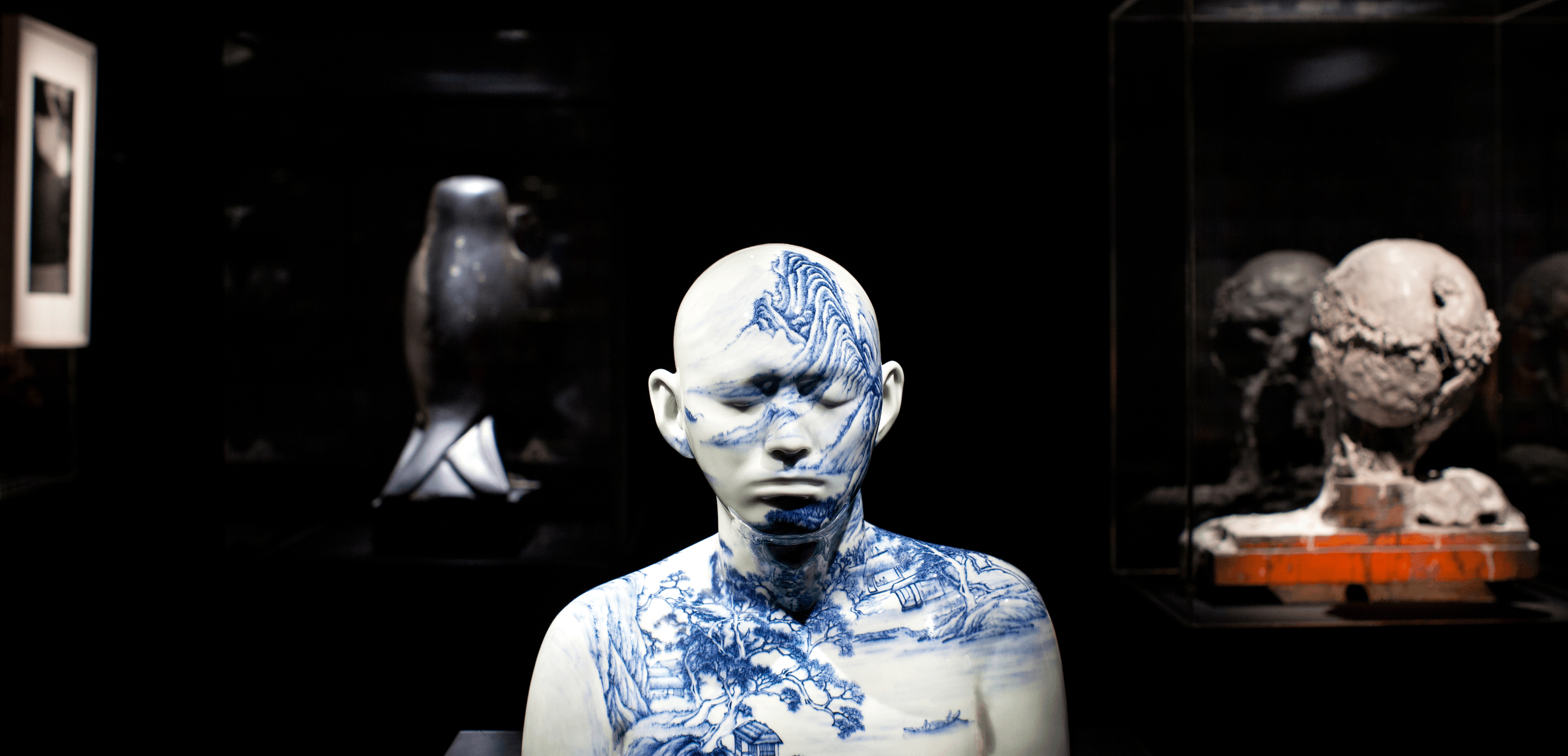Last Gasp
Please allow me to introduce myself. My name is Sunday Walsh and I’m two years old. Most kids aren’t art critics, and I’m no different (most two year olds aren’t so great at writing either). My Daddy built this place—he calls it Pharos—and he asked me to give you a quick précis of its purpose.
The first clue is the name. Pharos was a lighthouse in Alexandria. One of the original Wonders of the World. It seems to me Daddy is a bit up himself naming the new bit of Mona after a Wonder of the World, but we’ll leave that aside. The works in Pharos deal with light and, obviously, lighthouses deal with light, so I guess that’s some form of justification for Daddy’s bigheadedness.
This is what Daddy told me about Pharos: ‘At Pharos, we’ve got a robot that doesn’t do anything, and a machine that thrashes about that isn’t a robot. We’ve got a machine that draws wind (in the Round House), a corridor of colour, and a man-made oil slick. We’ve also got a resting room decorated with glass dildos, and a tunnel to nowhere. There’s also a pig-slicing machine if you fancy a fancy lunch. Outside there is a screen that blocks the sky and a room of rainbows.’ Daddy put such a lot of effort into it, but he can’t help making light of it (in more ways than one). That’s because he cares, and he defuses criticism with witticism.
There are good reasons for Mona, but he won’t tell you about them. I will. Throughout history people have sought purpose—that feeling of ‘oneness’. One way is through processional ritual. Like walking around the Kaaba in Mecca, or visiting the Stations of the Cross at Easter. They are religious processions, but Daddy has discovered that rituals are important even to those that don’t believe. Pharos is laid out as a series of processions, and most of the works involve ritualistic engagement with light. Daddy wants to put a hedge on the roof that looks like a maze, but really is just a walkway with a convoluted route. Do you know about the ancient processionals called the Nazca Lines? Some look like giant spiders and birds, others are straight. The idea seems to be to simply walk along them. So, Daddy says, wander around Pharos, and through the hedges and tunnels (when they get built), and commune with your inner spotlight. There are words you should recite while you wander … ‘Memento mori.’ Remember you must die. But say it in Latin. It’ll get you off the hook.
That’s why Daddy uses light to make his point. Light is ephemeral—it only maintains for a moment. Most of the rest of Mona is meant to be transient, but in Pharos the medium itself is transitory. That’s a little Daddy joke. He intends Pharos to be permanent, but though he built it out of the literal universal upper limit of fast phenomena—light—he wants everything to stay just like it is, even after he’s dead. He isn’t memento mori-ing. His genes may be immortal (let’s see what my sisters and I do with them), but he isn’t, and buildings won’t help. He should have bet on us for his hapless pursuit of immortality. Instead, he’s betting on concrete and clay. But I’m his kid. I’ll do what I can to fulfil his fantasy.
The staff will start meddling with Pharos the moment he breathes his final breath. Daddy knows that, so he made sure that the art was too big to take out through the tunnels. They can still bring stuff in, though. But when Daddy is dead, I’ll still be around. And because I wrote this on his behalf, I’ll be committed to his legacy. So when those future Mona bastards try to undermine that legacy, I’ll use my authority, given to the future me by the now me, to stop them. Daddy is using me to insure that his last gasp will also be his last laugh.
You need to book tickets to Event Horizon, Unseen Seen and Weight of Darkness.
The rest of Pharos is free with museum entry.




